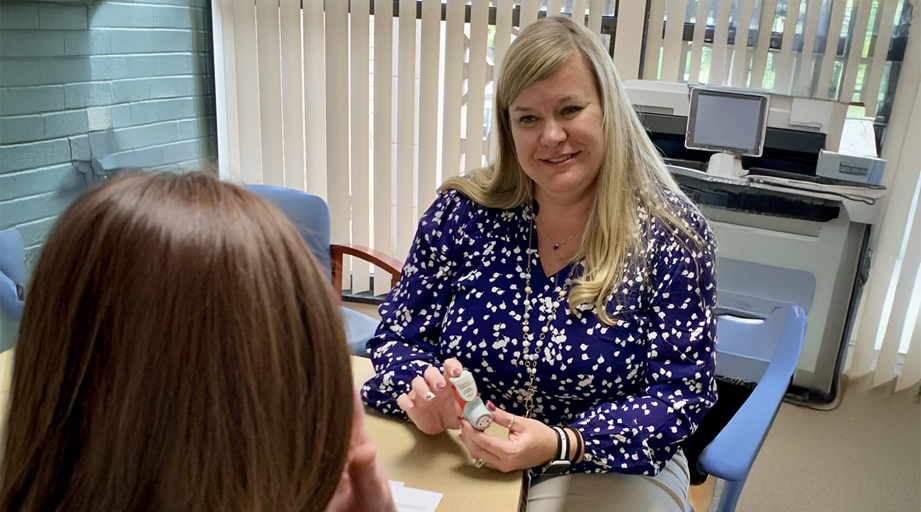
A clinician’s checklist for providing trauma-informed care seems both compassionate and uncontroversial. Sit at eye level with patients, for instance. Validate their frustrations. Respond in sensitive ways to disclosures of past traumas.
But such a systematic approach has not yet gone mainstream despite strong evidence of the overlap between trauma and physical pain, said speakers at the Midyear 2023 session on how pharmacists can apply a trauma-informed lens to patient care, particularly when it comes to pain management.
“We talk about individualized, patient-centered care. But can we really do that without being trauma informed?” said Terri Jorgenson, a national program manager for clinical pharmacy practice integration and model advancement with the Department of Veterans Affairs (VA).
Mary Driscoll, a clinical psychologist at the VA, urged attendees to take a more expansive view of trauma beyond only what she called “big T” traumatic events, such as military combat or sexual assault.
Evidence shows that adverse childhood experiences, including feeling unsafe at home, can hijack children’s nervous systems well into adulthood. She also described “little T” traumas, including bullying and racism, that can have a substantial impact on how patients interact with health systems.
Trauma has major implications for pain, she said, as most patients, particularly women, suffering from chronic pain have a prior history of trauma. She cited a Michigan study of women using Medicaid services that showed chronic pain conditions, such as fibromyalgia or irritable bowel syndrome, were highly associated with post-traumatic stress disorder.
One of the more subtle traumas that clinicians must understand is medical stigma — feeling that providers don’t believe them and won’t listen to them. “Medical stigma is traumatizing,” said Driscoll. “To go for help to someone you’re supposed to be able to trust and to walk away with a negative experience is traumatizing.”
The results of one study, published in 2020 in Pain Medicine, suggest that the “perceived injustice” women might have when they are seeking care for chronic pain may make their pain worse.
A typical “medical model” is a logical process that focuses on pathology and diagnosis, said Joshua Holland, who is trained as both a pharmacist and counselor. It is efficient, he said, but surface-level.
By contrast, a trauma-informed model focuses on understanding patients’ experiences and their coping strategies, including the use of drugs and alcohol, to get their nervous systems out of fight or flight and shutdown modes.
The presentation included case examples of female patients with chronic pain. In one example, the patient was distrustful of medical recommendations. She was also upset by noisy or chaotic environments. Under a traditional medical model, the pain reports might be attributed solely to a mental health issue.
But that patient, the audience later learned, had several adverse childhood experiences — including sexual assault and the death of her father — as well as a spinal injury, coerced military sexual trauma, and abandonment with her newborn. A trauma-informed model would note that pain and trauma go hand in hand.
Such a model also means being careful about word choice in medical documentation, said Tera Moore, a VA national program manager in clinical practice integration and model advancement. The presentation recommended using words like declined or described rather than refused or admitted.
Moore said that providers should assess whether their practices incorporate trauma-informed principles. Are waiting rooms calm, or are televisions blaring? Are office staff openly complaining about a patient in front of other patients? And are clinical staff prepared to ask about, and listen to, sensitive histories?
“Have you been in a visit as a pharmacist practitioner where they, for the first time, told you about a trauma they had?” said Moore. “It’s pretty impactful when you’re the person they can trust.”
Jorgenson said pharmacists can be leaders in their health systems by taking a compassionate approach to patient care and insisting their team do so as well. That can start with a simple step.
“Assume every patient that walks through your door has a history of trauma in some way, shape, or form,” she said. “If you do that, you can really think about approaching care in a new way, in a better way, in a way that is truly patient-centric.”







